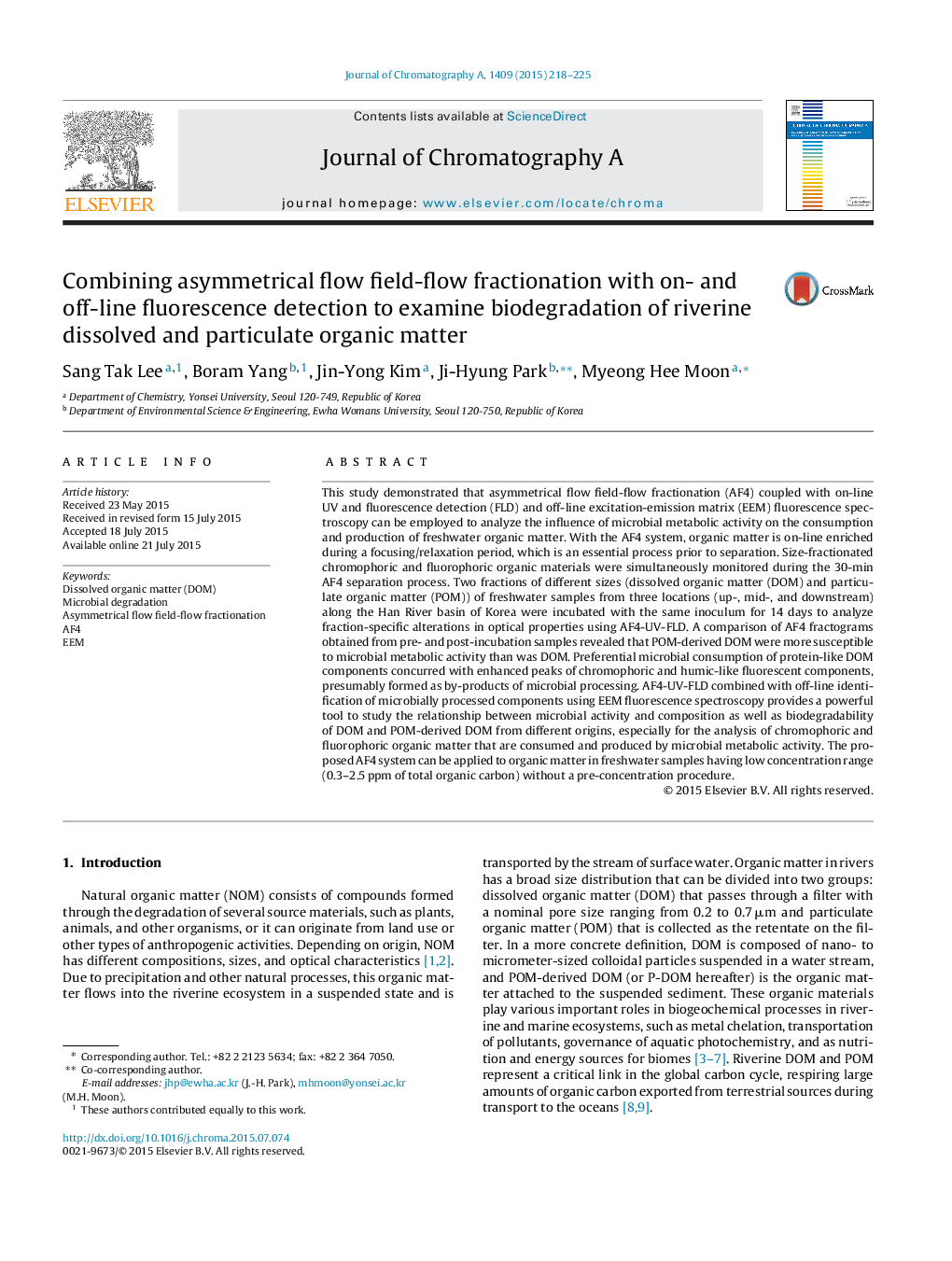| کد مقاله | کد نشریه | سال انتشار | مقاله انگلیسی | نسخه تمام متن |
|---|---|---|---|---|
| 1199010 | 1493517 | 2015 | 8 صفحه PDF | دانلود رایگان |
• On-line enrichment and separation of riverine organic matter were accomplished.
• Biodegradation of DOM and POM was investigated with AF4-UV-FLD and EEMs.
• Changes in humic-like and protein-like DOM by microbial organisms were examined.
• Sediment-derived organic matter was more susceptible to microbial activity than DOM.
This study demonstrated that asymmetrical flow field-flow fractionation (AF4) coupled with on-line UV and fluorescence detection (FLD) and off-line excitation-emission matrix (EEM) fluorescence spectroscopy can be employed to analyze the influence of microbial metabolic activity on the consumption and production of freshwater organic matter. With the AF4 system, organic matter is on-line enriched during a focusing/relaxation period, which is an essential process prior to separation. Size-fractionated chromophoric and fluorophoric organic materials were simultaneously monitored during the 30-min AF4 separation process. Two fractions of different sizes (dissolved organic matter (DOM) and particulate organic matter (POM)) of freshwater samples from three locations (up-, mid-, and downstream) along the Han River basin of Korea were incubated with the same inoculum for 14 days to analyze fraction-specific alterations in optical properties using AF4-UV-FLD. A comparison of AF4 fractograms obtained from pre- and post-incubation samples revealed that POM-derived DOM were more susceptible to microbial metabolic activity than was DOM. Preferential microbial consumption of protein-like DOM components concurred with enhanced peaks of chromophoric and humic-like fluorescent components, presumably formed as by-products of microbial processing. AF4-UV-FLD combined with off-line identification of microbially processed components using EEM fluorescence spectroscopy provides a powerful tool to study the relationship between microbial activity and composition as well as biodegradability of DOM and POM-derived DOM from different origins, especially for the analysis of chromophoric and fluorophoric organic matter that are consumed and produced by microbial metabolic activity. The proposed AF4 system can be applied to organic matter in freshwater samples having low concentration range (0.3–2.5 ppm of total organic carbon) without a pre-concentration procedure.
Journal: Journal of Chromatography A - Volume 1409, 28 August 2015, Pages 218–225
